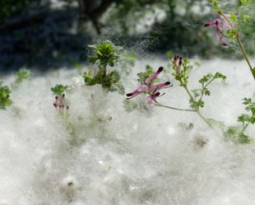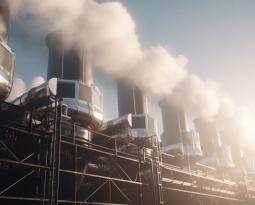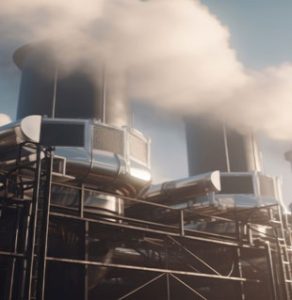 Poor air quality in our cities is an ongoing problem, but urbanization, defined as the migration of large numbers of people to concentrated areas, is a key factor driving this trend. Half of the world’s population currently lives in cities, and this is expected to increase to two-thirds by 2050. Urban centers produce roughly 78% of total carbon emissions, adversely affecting nearly half of the people living in them. While many people think of outdoor air as the primary issue, indoor air can be much worse. According to the EPA, indoor air pollutants are often 2 to 5 times higher than outdoor levels, and can exceed 100 times that of outdoor levels with the same pollutants. As urbanization continues to spread, air filters play a critical role in improving the lives of those who live in these communities.
Poor air quality in our cities is an ongoing problem, but urbanization, defined as the migration of large numbers of people to concentrated areas, is a key factor driving this trend. Half of the world’s population currently lives in cities, and this is expected to increase to two-thirds by 2050. Urban centers produce roughly 78% of total carbon emissions, adversely affecting nearly half of the people living in them. While many people think of outdoor air as the primary issue, indoor air can be much worse. According to the EPA, indoor air pollutants are often 2 to 5 times higher than outdoor levels, and can exceed 100 times that of outdoor levels with the same pollutants. As urbanization continues to spread, air filters play a critical role in improving the lives of those who live in these communities.
Particulate Matter and the Harmful Effects on Indoor Air Quality
Outside pollution, such as from manufacturing plants and motor vehicles, can find its way indoors through outside vents. Other sources of pollutants are already indoors, such as from gas stoves and HVAC systems. These pollutant particles are called particulate matter. There are two main kinds of particulate matter (PM), which are defined by their size.
PM10: Particles with a diameter of 2.5-10 micrometers, like dust, dirt, pollen and mold. At its largest, these particles are 1/5th the size of a human hair. These particles generally effect the larger airways of the upper region of the lung.
PM2.5: Particles with a diameter of 2.5 micrometers or less, such as soot, smoke, organic compounds and metals. These particulates are more likely to travel into the deeper parts of the lung, and so are more harmful.
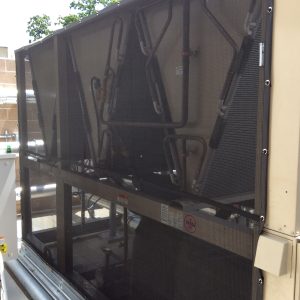 When particulate matter enters your bloodstream, it can cause serious health problems, including respiratory diseases such as asthma and COPD, cardiovascular diseases and even premature death. Additionally, exposure to air pollutants can impair cognitive function, decrease productivity and lead to absenteeism in workplaces and schools. Fortunately, proper air filtration can block many of these particles from filling a room, especially larger particulates.
When particulate matter enters your bloodstream, it can cause serious health problems, including respiratory diseases such as asthma and COPD, cardiovascular diseases and even premature death. Additionally, exposure to air pollutants can impair cognitive function, decrease productivity and lead to absenteeism in workplaces and schools. Fortunately, proper air filtration can block many of these particles from filling a room, especially larger particulates.
Managing Indoor Air Quality
Implementing effective air filtration measures is essential for improving indoor air quality. Studies have shown that air filters may reduce indoor PM and increase peak respiratory rate. Recent advancements in air filtration technology have revolutionized how we address urban air quality issues, and products like prefilters help improve longevity and keep people safe. (It should be noted that blocking PM2.5 particles requires high-efficiency filters, such as HEPA filters.)
PreVent Filters Make Indoor Air Healthier
Prefilters are an indispensable part of any HVAC system. PreVent® filters act as a powerful first line of defense against particulate matter and other hazardous particles, preventing larger particles from clogging these advanced filters. This ensures that the HVAC system can effectively capture pollutants generated by urban activities, such as dust and vehicular emissions.
Extended Product Lifespan: By reducing the burden on high-efficiency filters, prefilters extend the duration between filter replacements, lowering overall maintenance costs.
Consistent IAQ: Prefilters help maintain consistent indoor air quality by optimizing the outside air ventilation and stabilizing the fluctuations of outdoor pollution levels.
Energy Efficiency: When combined with high-efficiency filters, prefilters allow the HVAC system to operate at full capacity, ultimately reducing energy consumption and increasing cost efficiency.
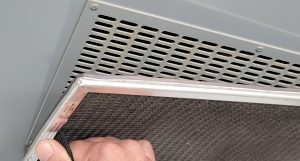 Urbanization and Permatron
Urbanization and Permatron
As cities continue to grow and urbanization persists, investing in high-quality air filtration systems becomes imperative for creating cleaner, healthier and more sustainable indoor environments. By prioritizing indoor air quality management and embracing filtration, we can mitigate the adverse effects of urbanization and ensure a better quality of life for all urban dwellers now and in the future.
Visit our Contact Us page to get more information on our filters and discover why there’s only 1 Permatron.
